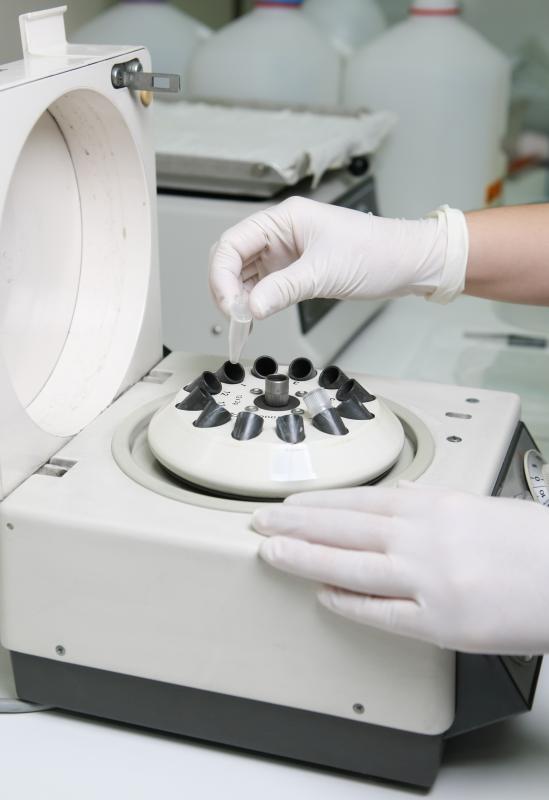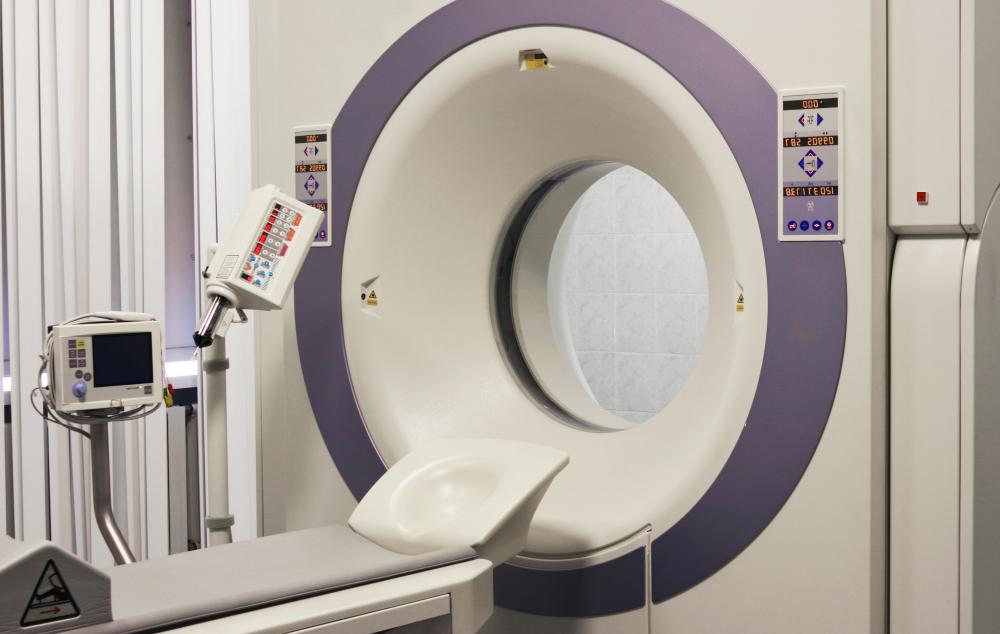At TheHealthBoard, we're committed to delivering accurate, trustworthy information. Our expert-authored content is rigorously fact-checked and sourced from credible authorities. Discover how we uphold the highest standards in providing you with reliable knowledge.
What Are the Different Types of Medical Electronics?
There are quite a few types of medical electronics, ranging from small hand-held devices to large devices and systems for medical imaging. These products are used in diagnostics and therapeutic and clinical laboratory equipment. Aside from stand-alone devices, medical electronics can also include the computer systems that run electronic medical records and mobile communication devices that run medical applications. Medical electronics used in procedures and for patient monitoring make up an additional category.
Home health care utilizes a number of medical electronics, such as glucose testing devices and blood pressure monitors. Wearable and wireless technologies are evolving to capitalize on the smaller and more elaborate electronic components as they become available. Prosthetics have also begun to incorporate electronic parts in their designs.

Some devices utilize radio-frequency identification (RFID) technology. Chips have been developed that store information for purposes such as tracking patient surgery specifics to avoid errors. RFID is also used in pacemakers and hearing aids. Health care facilities sometimes use RFID-enhanced equipment to facilitate inventory tracking and management.

Imaging systems are among the larger types of medical electronics, both physically and as a category. The technology may use radar, as in an ultrasound machine, projection radiology, or a variety of similar means. Examples of devices in this category include magnetic resonance imaging (MRI) machines, computed topography (CT) scanners, and mammography machines.

Miscellaneous medical instruments fall into yet another of the types of medical electronics. Digital thermometers, digital stethoscopes, and electronic endoscopes are a few prime examples. Centrifuge systems and most medical testing equipment will inevitably contain electronic components.
Nanotechnology is perhaps the most innovative of the categories of medical electronics. Advances have been made that allow for the development of nanobots that can perform imaging or surgical procedures. Microchips, semiconductors, and the like will continue to play a huge role in the growth and expansion of electronic utilization in the medical industry. As of 2011, electronic components reached near ubiquity in medical devices and systems.

Electrocardiogram (ECG), electroencephalogram (EEG), and electromiogram (EMG) studies are among the most well-known types of medical electronics. These studies use bio-electrical signals to record the activity associated with the heart, the brain, and the skeletal muscles, respectively. Electronics are virtually everywhere in the medical industry, from a hospital bed to a digitized bathroom scale. Covering all of the types and examples of medical electronics is not feasible due to the ever-changing and evolving landscapes of both technology and the medical industry.
AS FEATURED ON:
AS FEATURED ON:


















Discuss this Article
Post your comments